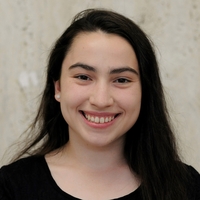The Role of TNF-alpha Signaling in the Healing of the Knee Following ACL Rupture and Reconstruction
As my experience with Penn’s Undergraduate Research Mentoring (PURM) summer program in the Dyment Lab in the Department of Orthopaedic Surgery was remote, my project is styled after a research grant proposal rather than an actual experiment.
Most people who injure their anterior cruciate ligaments (ACL) develop post-traumatic osteoarthritis (PTOA), characterized by chronic pain and swelling that gets progressively worse. ACL re-injury is becoming increasingly common. Inflammation from the injury itself is one of the main reasons ACL reconstructions tend to be performed multiple weeks after the injury. TNF-alpha contributes to PTOA by signaling for the release of matrix metalloproteinases from synovial fibroblasts and inhibiting chondrogenesis. In cases in which TNF-alpha levels were naturally elevated, recovery after ACL reconstruction was prolonged. The mechanisms by which TNF-alpha affects ACL healing are not well understood. My proposal is to study the role of TNF-alpha signaling on the healing of the knee following ACL rupture and reconstruction. My aims are to establish the effects of this signaling on both events.
My global hypothesis is that abnormal levels of TNF-alpha will worsen the ACL healing response. This adopts a Goldilocks-type foundation in which overactive signaling will be bad because it will accelerate joint degradation while depressed signaling will also be bad because there will be less clearance of necrotic tissues.
This study will be conducted using mouse models. There will be three groups of mice used: one with normal levels of signaling, one inducible Cre-lox mouse that increases TNF-alpha signaling from cartilage cells, and one inducible Cre-lox mouse that decreases TNF-alpha signaling from cartilage cells. These mice will then be split into four treatment groups: uninjured, manual ACL rupture, ACL rupture by surgical transection, and ACL reconstruction. There are two different ACL rupture groups because manual rupture more closely simulates human ACL injury but often involves secondary injuries that can be controlled for in the surgical transection. The mice will undergo various imaging and biomechanical assays, including high-resolution MRI, drawer tests, and stained microscopy.
This study is innovative for establishing the effects of varying levels of TNF-alpha signaling in the knee and elucidating its mechanisms after ACL injury. The results of this study could inform future treatments of ACL injury.

Comments
Sinaia, I love this approach…
Sinaia, I love this approach of writing a research grant proposal rather than reporting on actual experiments! In many ways, this "thought experiment" approach may actually be more informative for a student than the process of doing the hands-on work. You've now been fully immersed in the experimental process beginning to end. Assuming the genetically engineered mice already exist, will you start by generating the injuries? Or what is your plan when you are able to get your hands "wet?"
@ Dr. Vernon-Grey
Both types of genetically-engineered mice I want to use exist already. My plan is to induce the mutation just before the injury, which would be implemented at 16 weeks of age (adult mice). The assays would then be performed 4 weeks later, allowing enough time for PTOA to develop.